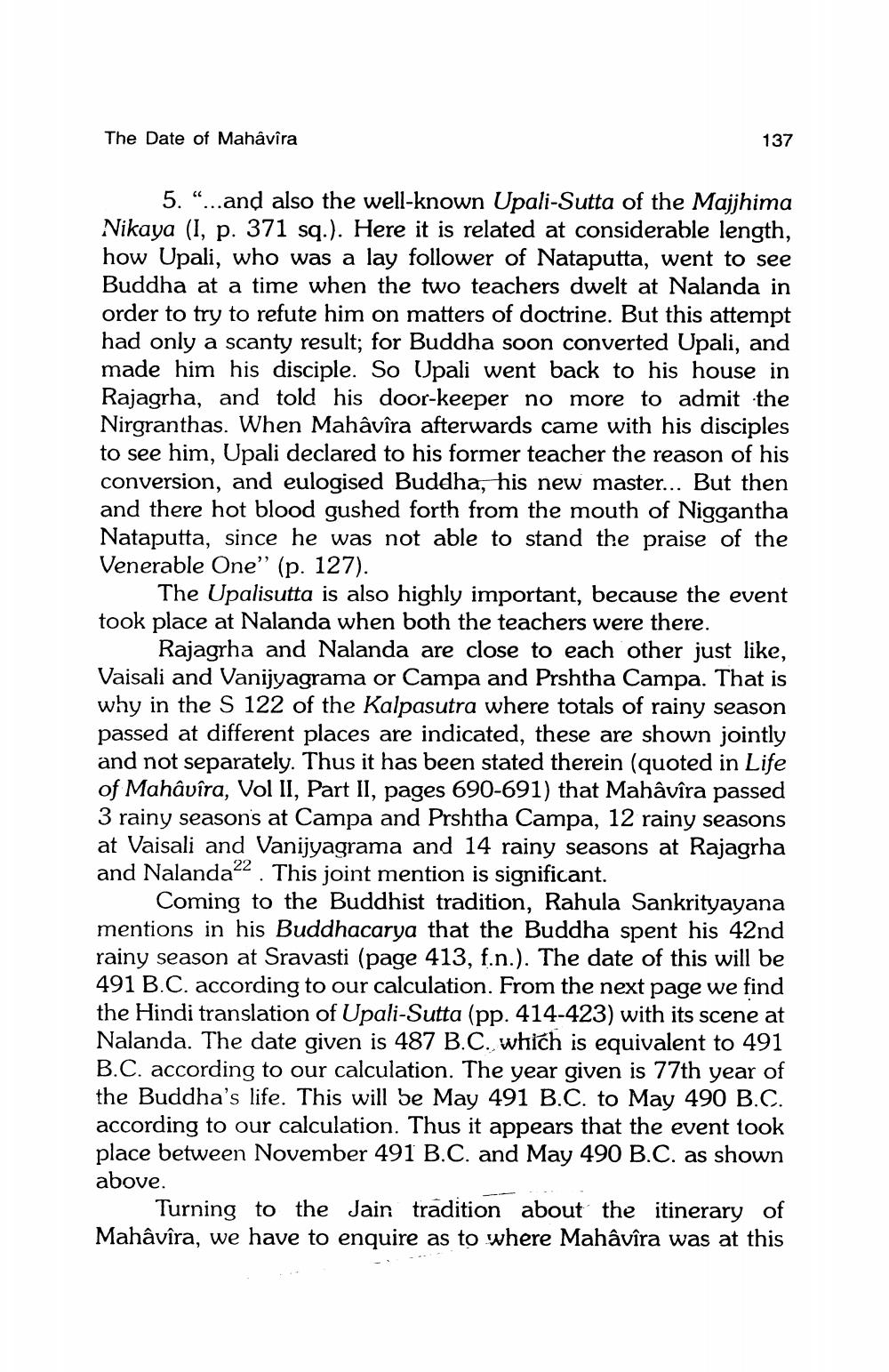________________
The Date of Mahâvîra
137
5. "...and also the well-known Upali-Sutta of the Majjhima Nikaya (I, p. 371 sq.). Here it is related at considerable length, how Upali, who was a lay follower of Nataputta, went to see Buddha at a time when the two teachers dwelt at Nalanda in order to try to refute him on matters of doctrine. But this attempt had only a scanty result; for Buddha soon converted Upali, and made him his disciple. So Upali went back to his house in Rajagrha, and told his door-keeper no more to admit the Nirgranthas. When Mahâvîra afterwards came with his disciples to see him, Upali declared to his former teacher the reason of his conversion, and eulogised Buddha, his new master... But then and there hot blood gushed forth from the mouth of Niggantha Nataputta, since he was not able to stand the praise of the Venerable One" (p. 127).
The Upalisutta is also highly important, because the event took place at Nalanda when both the teachers were there.
Rajagrha and Nalanda are close to each other just like, Vaisali and Vanijyagrama or Campa and Prshtha Campa. That is why in the S 122 of the Kalpasutra where totals of rainy season passed at different places are indicated, these are shown jointly and not separately. Thus it has been stated therein (quoted in Life of Mahâvîra, Vol II, Part II, pages 690-691) that Mahâvîra passed 3 rainy seasons at Campa and Prshtha Campa, 12 rainy seasons at Vaisali and Vanijyagrama and 14 rainy seasons at Rajagrha and Nalanda22. This joint mention is significant.
Coming to the Buddhist tradition, Rahula Sankrityayana mentions in his Buddhacarya that the Buddha spent his 42nd rainy season at Sravasti (page 413, f.n.). The date of this will be 491 B.C. according to our calculation. From the next page we find the Hindi translation of Upali-Sutta (pp. 414-423) with its scene at Nalanda. The date given is 487 B.C. which is equivalent to 491 B.C. according to our calculation. The year given is 77th year of the Buddha's life. This will be May 491 B.C. to May 490 B.C. according to our calculation. Thus it appears that the event took place between November 491 B.C. and May 490 B.C. as shown above.
Turning to the Jain tradition about the itinerary of Mahâvîra, we have to enquire as to where Mahâvîra was at this




